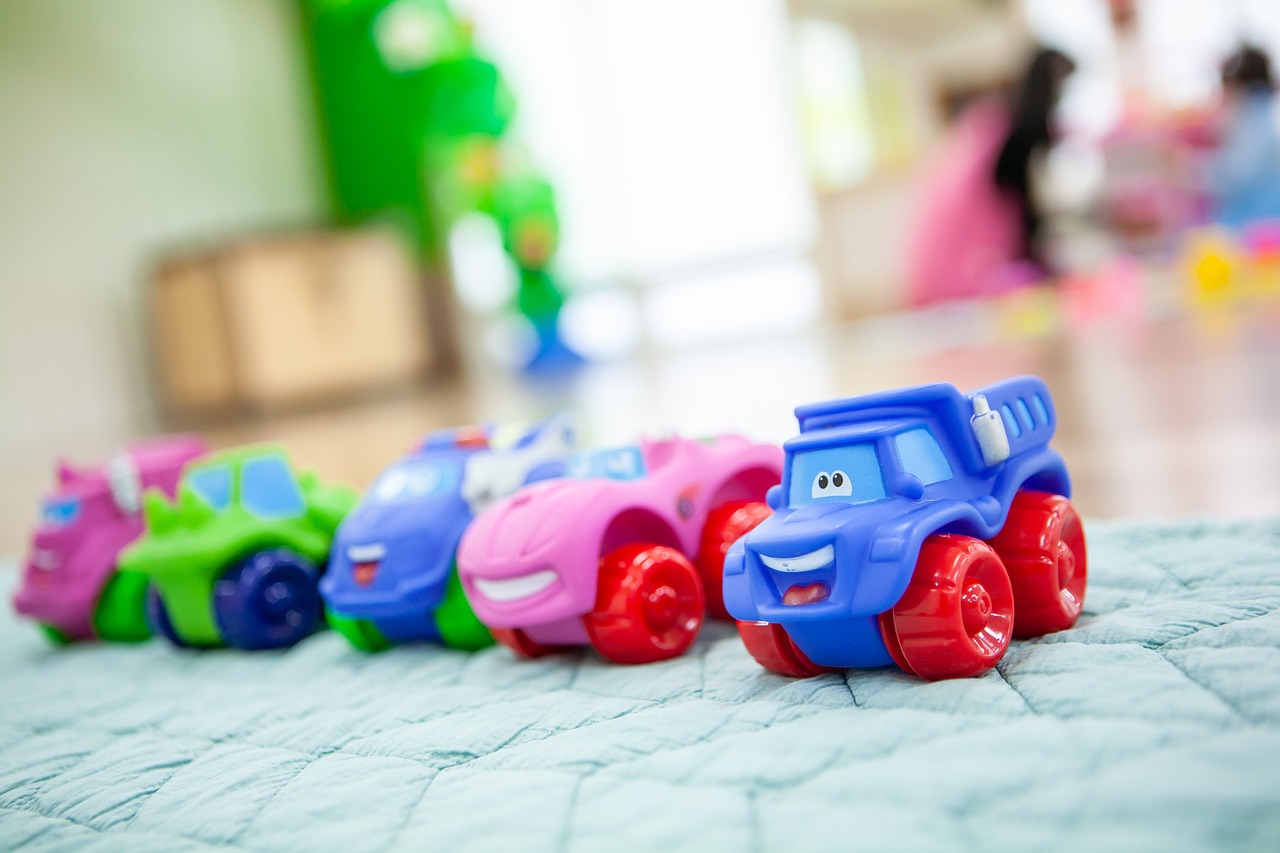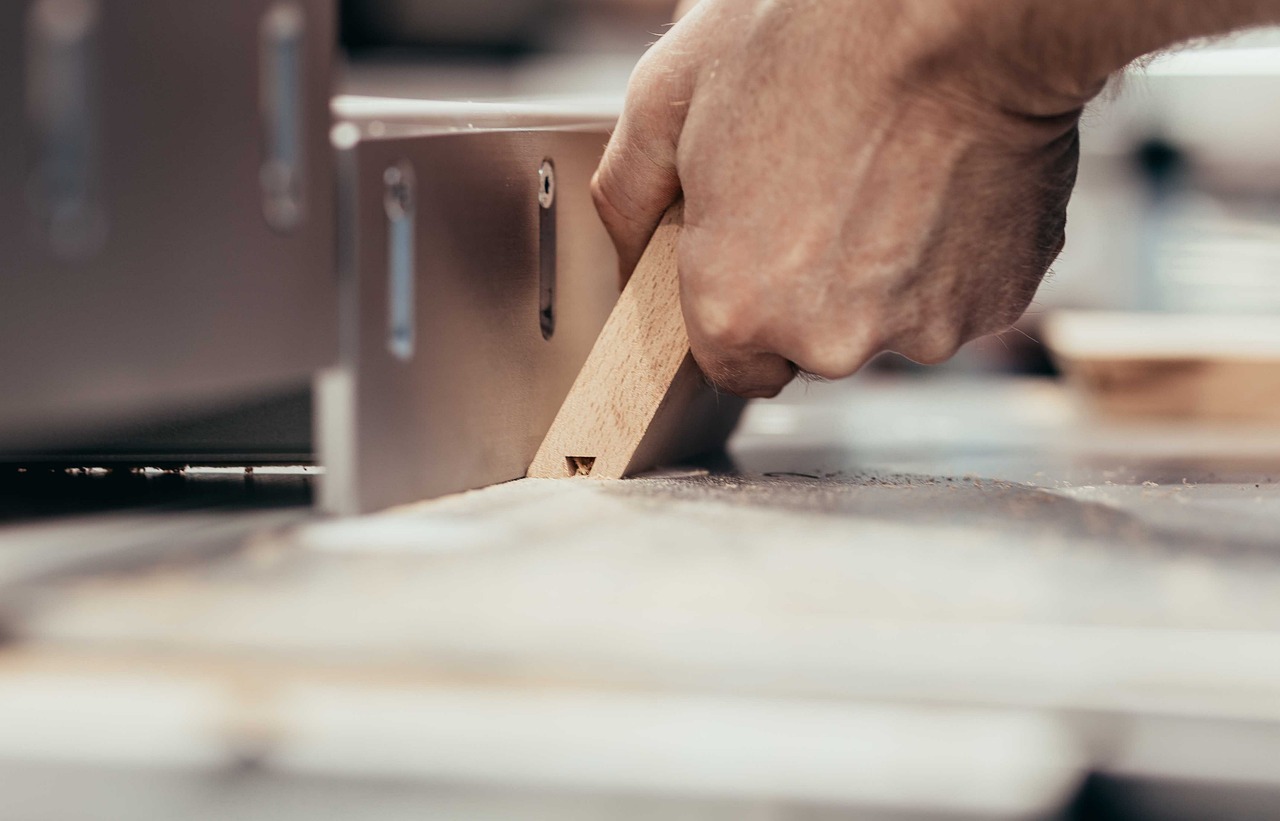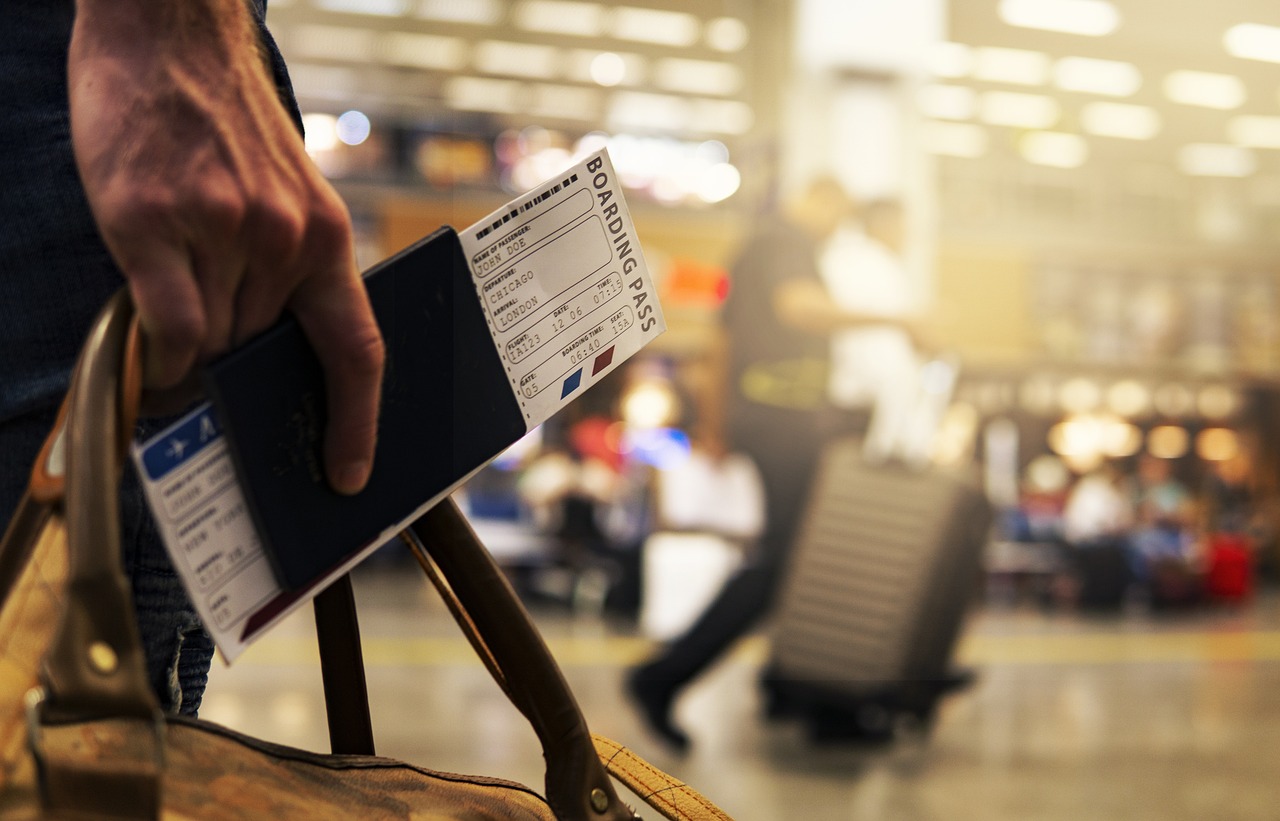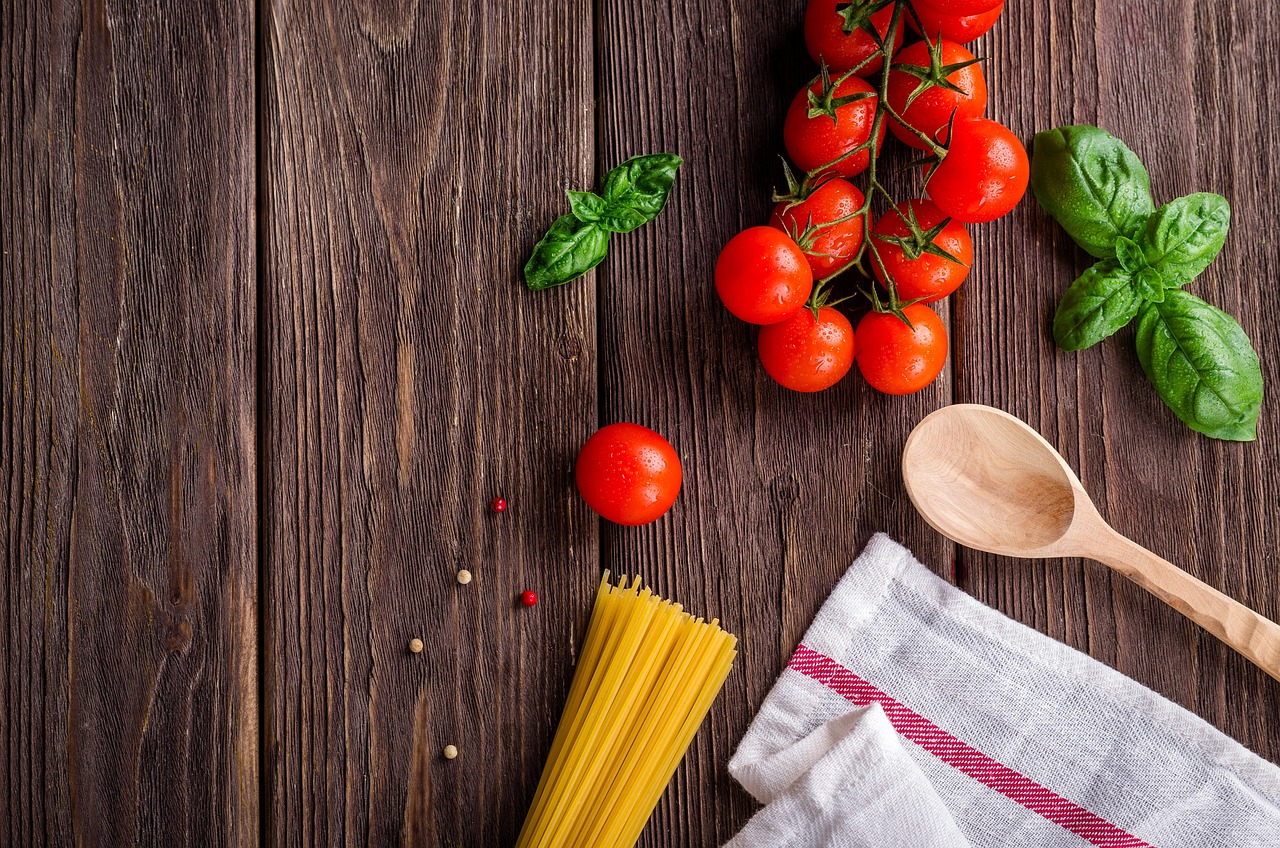Crafting a Wooden Toy Plane: A DIY Guide
Are you ready to embark on an exciting journey of creativity and craftsmanship? Crafting a wooden toy plane isn't just about making a toy; it's about sparking joy and nostalgia, bringing a little bit of childhood magic back into our lives. This guide provides step-by-step instructions for creating a charming wooden toy plane, along with tips on materials, tools, and techniques to ensure a fun and successful crafting experience. Whether you're a seasoned woodworker or a curious beginner, you’ll find this project both rewarding and enjoyable. So, roll up your sleeves, gather your tools, and let’s take off into the world of woodworking!
When it comes to crafting your wooden toy plane, selecting the appropriate type of wood is absolutely crucial for durability and ease of crafting. You want a wood that not only looks good but also stands the test of time. Here are some popular wood options:
- Pine: Lightweight and easy to work with, making it a great choice for beginners.
- Maple: Known for its strength and smooth finish, perfect for a more polished look.
- Birch: Offers excellent durability and a beautiful grain, ideal for intricate designs.
Each type of wood has its own characteristics. Pine is soft and forgiving, which is why it's often recommended for novice crafters. On the other hand, maple and birch can give your toy plane a more refined appearance, but they require a bit more skill to work with. Consider your skill level and the look you want to achieve when making your choice!
Before diving into the fun part of crafting, it’s essential to gather all the necessary tools for making your wooden toy plane. Being well-prepared will ensure a smooth crafting process and help you avoid any unnecessary hiccups. Here’s a breakdown of the essential tools you’ll need:
Hand tools play a vital role in woodworking projects, especially for a DIY toy plane. Here are some must-have hand tools:
- Saws: A coping saw or jigsaw will help you make precise cuts.
- Chisels: Useful for creating smooth edges and detailed features.
- Sanders: Essential for giving your plane a polished finish.
These tools will allow you to shape your wood accurately and ensure your toy plane is not only fun to play with but also safe for little hands.
While hand tools are great, power tools can significantly expedite the crafting process. Tools like drills and routers can save you time and effort. Just remember, with great power comes great responsibility! Always follow safety guidelines when using power tools. They can make your project easier, but they also require careful handling.
Speaking of safety, it should always be a priority when crafting. Never underestimate the importance of wearing appropriate safety gear. A good pair of goggles can protect your eyes from flying debris, and gloves can shield your hands from sharp edges. Always prioritize your safety to ensure that your crafting experience is enjoyable and free from accidents!
Creating a design template is essential for a successful build. Sketching your plane design can be a fun and creative process. Consider the proportions and features that will enhance the toy's appeal. You might want to include elements like a propeller, wings, or even a little pilot figure! The sky's the limit when it comes to your imagination!
Now that you’ve chosen your wood and gathered your tools, it’s time to dive into the assembly process. This section provides a detailed, step-by-step guide to assembling your wooden toy plane, ensuring you follow the correct sequence for a sturdy and attractive final product.
Accurate cutting is crucial for a seamless assembly. Measure twice, cut once! Take your time to ensure that your wood pieces are cut according to your design. Precision is key to achieving a perfect fit when it comes to assembling your toy plane.
Once your pieces are cut, it’s time to put them together. This part can be incredibly satisfying as you see your creation taking shape. Use adhesives and fasteners effectively to join the pieces, ensuring a strong bond. Don’t rush this step; a little patience can go a long way in achieving a beautiful final product.
Adding finishing touches can elevate the appearance of your toy plane from good to spectacular! Sanding, painting, and sealing techniques can enhance both aesthetics and durability. A little effort in this stage can make your toy plane truly shine.
Choosing the right painting technique can make your toy plane stand out. Consider methods like brush painting for a classic look or spray painting for a smooth finish. Whatever you choose, don’t forget to let your creativity soar!
Finally, to ensure longevity, sealing your wooden toy is essential. Options like varnishes and oils can protect your plane from wear and tear, keeping it looking fresh for years to come. A well-sealed toy not only looks great but also withstands the test of time!
Q: How long does it take to craft a wooden toy plane?
A: The time can vary based on your skill level and the complexity of your design, but typically, it can take anywhere from a few hours to a couple of days.
Q: What type of paint is safe for children's toys?
A: Look for non-toxic, water-based paints that are specifically labeled as safe for children's toys.
Q: Can I use recycled wood for my project?
A: Absolutely! Recycled wood can add character to your toy plane and is a great way to be environmentally friendly.

Choosing the Right Wood
When it comes to crafting your charming wooden toy plane, selecting the right type of wood is absolutely crucial. Not only does the type of wood you choose affect the durability of your toy, but it also plays a significant role in how easy or difficult the crafting process will be. Just imagine trying to carve intricate details from a dense hardwood; it would be like trying to slice through a brick with a butter knife! So, let’s dive into the world of wood and explore some of the best options available for your project.
First and foremost, you’ll want to consider the weight of the wood. A lightweight wood is ideal for toy planes, as it allows for better flight and easier handling for little hands. Here are some popular types of wood that are perfect for crafting your toy plane:
- Pine: This is a fantastic choice for beginners. Pine is soft, easy to work with, and widely available. Plus, it has a lovely light color that can be easily painted or stained.
- Birch: Known for its durability, birch is a bit denser than pine but still manageable. It has a smooth finish that makes it perfect for a polished look.
- Maple: If you’re looking for a hardwood that can withstand the test of time, maple is an excellent option. It’s strong and has a beautiful grain, although it can be a bit more challenging to work with.
- Poplar: This wood is a favorite among woodworkers for its versatility and affordability. It’s easy to paint and can provide a sturdy base for your toy plane.
Now, while choosing the wood, you should also think about the finishing options. Some woods take paint and varnish better than others, which can affect the final look of your project. For instance, if you’re envisioning a bright, colorful toy plane, you might want to steer towards a wood that has a smoother surface, like birch or poplar. On the other hand, if you prefer a natural finish that showcases the beautiful grain, maple might be your best bet.
Additionally, consider the environmental impact of your wood choice. Opting for sustainably sourced wood not only helps the environment but also adds a story to your toy plane. Look for woods that are certified by organizations like the Forest Stewardship Council (FSC) to ensure you’re making a responsible choice.
To summarize, here are some key points to keep in mind when choosing your wood:
| Type of Wood | Weight | Durability | Finish |
|---|---|---|---|
| Pine | Light | Moderate | Easy to paint/stain |
| Birch | Moderate | High | Smooth finish |
| Maple | Heavy | Very high | Beautiful grain |
| Poplar | Light | Moderate | Easy to paint |
Choosing the right wood is the first step in your crafting journey. It sets the foundation for your project and can significantly influence the final outcome. So take your time, explore your options, and pick the wood that resonates with your vision for that delightful wooden toy plane!

Essential Tools for the Project
Before diving into the delightful world of crafting your wooden toy plane, it’s crucial to gather all the essential tools that will make your project not only easier but also more enjoyable. Having the right tools at your fingertips can transform a daunting task into a fun and rewarding experience. Think of it as preparing for a grand adventure; you wouldn’t set off into the wild without the right gear, would you? Similarly, equipping yourself with the right tools will ensure that you can navigate the challenges of woodworking with confidence and creativity.
In the realm of woodworking, tools can be broadly categorized into two types: hand tools and power tools. Each category has its unique benefits and plays a significant role in the crafting process. Let’s break it down:
Hand tools are the backbone of any woodworking project. They provide the precision and control needed to create intricate designs and details that will make your toy plane truly special. Here are some must-have hand tools you should consider:
- Saws: A good quality saw is essential for cutting your wood into the desired shapes. A coping saw or a jigsaw can be particularly useful for making curved cuts.
- Chisels: Chisels come in handy for carving out details and smoothing edges. They allow you to add character to your plane.
- Sanders: Sanding is crucial for achieving a smooth finish. An assortment of sandpaper grits will help you refine your work.
Using hand tools not only enhances your craftsmanship but also connects you to the traditional methods of woodworking, making the process feel more authentic and fulfilling.
While hand tools are fantastic for precision, power tools can significantly speed up the process, especially for larger cuts. They can be a game-changer when you’re in the zone and want to get your project moving. Here are a couple of power tools that can be particularly beneficial:
- Drill: A drill is essential for creating holes for dowels or screws, ensuring that your plane is securely assembled.
- Router: A router can add decorative edges and grooves to your plane, giving it a professional touch.
Of course, with great power comes great responsibility! Always remember to follow safety guidelines when using power tools to prevent accidents and ensure a smooth crafting experience.
Speaking of safety, it’s vital to prioritize your well-being throughout the crafting process. Wearing appropriate safety gear is non-negotiable. Imagine you’re a pilot preparing for takeoff; you wouldn’t skip your safety checks, right? Here’s what you should wear:
- Goggles: Protect your eyes from sawdust and flying debris.
- Gloves: Keep your hands safe from sharp edges and splinters.
- Ear Protection: If you’re using power tools, consider wearing earplugs or earmuffs to protect your hearing.
By taking these precautions, you’ll be able to focus on what really matters: crafting a beautiful wooden toy plane that you can be proud of. So gather your tools, gear up, and let’s get started on this exciting journey together!
Q: What type of wood is best for a toy plane?
A: Softwoods like pine or cedar are great choices for beginners due to their ease of cutting and shaping.
Q: Do I need power tools to make a wooden toy plane?
A: While power tools can speed up the process, they are not strictly necessary. Hand tools can work just as well.
Q: How can I ensure my toy plane is safe for children?
A: Make sure to sand all edges smoothly and use non-toxic paints and finishes to keep it safe for little hands.

Hand Tools
When it comes to crafting your wooden toy plane, having the right hand tools is not just a suggestion—it's a necessity. Think of hand tools as your trusty sidekicks in this woodworking adventure. They are essential for shaping, cutting, and refining your project, ensuring that every piece fits together like a well-oiled machine. So, what tools should you have in your arsenal? Let's dive into the must-haves that will make your crafting experience not only successful but also enjoyable.
First and foremost, a good quality hand saw is indispensable. This tool allows you to make precise cuts in your wood, and it’s perfect for those intricate shapes that give your toy plane its unique character. Next, you'll want a set of chisels. These are fantastic for carving out details and smoothing edges, making your plane not just a toy, but a work of art. Don't underestimate the power of a reliable sanding block or sandpaper either; they are crucial for achieving that smooth finish that feels great to the touch and looks professional.
But wait, there’s more! A clamp is also a vital tool in your kit. It holds your pieces in place while you work, ensuring that everything stays aligned and secure. Imagine trying to glue two parts together without a clamp—it's like trying to juggle with one hand tied behind your back! Additionally, a ruler or a measuring tape will help you achieve accuracy in your cuts, which is essential for a well-fitted assembly.
To give you a clearer picture, here’s a quick overview of the essential hand tools you should gather:
| Tool | Purpose |
|---|---|
| Hand Saw | For making precise cuts in wood. |
| Chisels | For carving and detailing. |
| Sanding Block/Sandpaper | For smoothing surfaces. |
| Clamp | To hold pieces together while working. |
| Ruler/Measuring Tape | For accurate measurements. |
Each of these tools plays a pivotal role in your crafting process. Remember, the right tools not only make your work easier but also enhance the quality of your final product. So, before you dive into the assembly, take a moment to gather these essentials and set yourself up for success. Happy crafting!
- What type of wood is best for a toy plane? Softwoods like pine or cedar are great choices due to their ease of handling and sanding.
- Do I need power tools for this project? While hand tools are sufficient, power tools can speed up the process and make certain tasks easier.
- Is it safe to use hand tools? Absolutely! Just ensure you follow safety guidelines, and always wear appropriate gear.

Power Tools
When it comes to crafting your wooden toy plane, can be your best friends. They not only save time but also enhance the precision of your cuts and designs, making the entire process more enjoyable. Imagine trying to cut through thick wood with just a hand saw—exhausting, right? That's where power tools come into play, transforming what could be a daunting task into a smooth and efficient experience.
One of the most versatile tools you'll want in your arsenal is the drill. Whether you need to create holes for dowels, screws, or just to lighten your plane, a drill is essential. Not only can it make quick work of drilling, but it can also be used with various attachments for sanding or even mixing paint. If you're looking to add some flair to your toy, consider using a drill with a sanding attachment to smooth out those edges and corners, giving your plane a polished look.
Another powerhouse tool is the router. This tool is perfect for adding decorative edges and grooves to your design, making your toy plane not just functional but also visually appealing. Picture your plane with beautifully rounded edges or intricate patterns—this is where a router shines. It can be a bit intimidating for beginners, but with practice, you'll find it becomes an indispensable part of your toolkit.
However, with great power comes great responsibility. It's crucial to prioritize safety when using power tools. Always wear safety goggles to protect your eyes from flying debris, and consider using ear protection, especially when working with louder tools. Make sure to read the manuals for each tool and understand the proper techniques to avoid accidents. Remember, your safety is paramount, and taking a few precautions can save you from potential injuries.
In summary, while hand tools are essential for any woodworking project, integrating power tools into your crafting process can significantly enhance your efficiency and precision. Embrace the power of these tools and watch as your wooden toy plane comes to life with ease and creativity!

Safety Gear
When it comes to crafting your wooden toy plane, prioritizing safety is not just a good idea—it's essential! You might think that woodworking is all about creativity and fun, but without the right , it can quickly turn into a risky endeavor. So, what should you wear to ensure you're protected while you unleash your inner craftsman? Let's dive into the must-have items that will keep you safe and sound during your project.
First and foremost, protective goggles are a non-negotiable item. Whether you're cutting, sanding, or drilling, tiny splinters and dust can fly into your eyes, causing irritation or even injury. A good pair of goggles will shield your peepers from any unexpected debris. Next up, consider investing in a decent pair of ear protection. If you’re using power tools like saws or drills, the noise can be deafening, and prolonged exposure can damage your hearing. Earplugs or earmuffs are simple yet effective solutions.
Don't forget about your hands! Wearing work gloves can protect your fingers from sharp edges and splinters while providing a better grip on your tools. Choose gloves that are durable yet flexible enough to allow you to manipulate your tools easily. Lastly, dust masks should be on your list, especially when sanding or cutting wood. Inhaling wood dust can lead to respiratory issues over time, so a mask will help filter out harmful particles from the air you breathe.
To give you a clearer picture, here's a quick overview of the essential safety gear you should have:
| Safety Gear | Description |
|---|---|
| Protective Goggles | Shield your eyes from flying debris and dust. |
| Ear Protection | Protect your hearing from loud power tools. |
| Work Gloves | Safeguard your hands from cuts and splinters. |
| Dust Masks | Filter out harmful dust particles from the air. |
In summary, wearing the right safety gear is a small investment that can save you from significant injuries. So, before you start crafting your wooden toy plane, make sure you're geared up and ready to go. Remember, the goal is to have fun while staying safe, so don’t skimp on protection!
Q: Do I really need safety gear for woodworking?
A: Yes, safety gear is essential to protect yourself from potential injuries, such as eye damage, hearing loss, and cuts. It's better to be safe than sorry!
Q: Can I use regular gloves instead of work gloves?
A: While regular gloves may offer some protection, work gloves are designed specifically for woodworking and provide better grip and durability.
Q: What type of dust mask should I use?
A: A mask rated N95 or higher is recommended for filtering out wood dust and other particulates effectively.
Q: Is it necessary to wear ear protection?
A: If you're using power tools that produce loud noise, ear protection is highly recommended to prevent hearing damage.

Designing Your Toy Plane
Designing your wooden toy plane is one of the most exciting parts of the crafting process. It’s where your imagination takes flight, and you can truly express your creativity! Before diving into the actual building, it’s essential to sketch out a design that reflects what you envision. Think about the size, shape, and features of your plane. Would you like it to have a classic look, or do you want to add some modern flair? This is your chance to create a unique piece that stands out.
When sketching your design, consider the proportions of the plane. A well-balanced toy not only looks appealing but also ensures it can be played with safely. You might want to draw several versions, tweaking the wings, tail, and body until you find the perfect combination. Remember, the wings should be wide enough for stability, and the body should be robust yet lightweight.
Here are a few tips to keep in mind while designing:
- Proportions: Make sure the wings are proportionate to the body. A general rule of thumb is that the wings should span about 1.5 times the length of the body.
- Features: Consider adding fun features like a propeller or windows. These small details can make your toy plane more engaging for kids.
- Color Scheme: Although this comes later, think about how you want to paint your plane. A vibrant color scheme can make your toy more attractive.
Once you have a solid design, it’s time to create a template. You can do this by transferring your sketch onto a piece of cardboard or paper. Cut out the different parts of your plane, such as the wings, body, and tail. This template will serve as a guide when you start cutting your wood pieces. Ensure that your template is accurate, as any mistakes here can lead to misaligned parts later on.
Lastly, don’t forget to consider the playability of your design. A toy is meant to be played with, so think about how children will interact with it. Will it be easy to hold? Can it withstand rough handling? These factors are crucial in ensuring that your wooden toy plane is not just a pretty piece but also a durable and enjoyable toy.

Step-by-Step Assembly Instructions
Assembling your wooden toy plane is where the magic truly happens! This is the moment when all the planning, measuring, and cutting come together to create something tangible and delightful. Follow these detailed instructions carefully to ensure that your toy plane not only looks great but is also sturdy enough to withstand the adventures of imaginative play.
First things first, it’s important to lay out all your cut pieces in front of you. This will give you a clear visual of how everything fits together, much like a puzzle waiting to be solved. You should have the following components ready:
- Fuselage pieces
- Wings
- Tail section
- Propeller
- Landing gear
Now, let’s dive into the assembly process. Start with the fuselage, which is the main body of your plane. Take the two fuselage pieces and apply wood glue along the edges that will be joined. Make sure to use enough glue for a strong bond, but not so much that it oozes out when pressed together. Once you’ve applied the glue, carefully align the pieces and press them together. You might want to use clamps to hold them in place while the glue dries. This can take anywhere from 30 minutes to a few hours, depending on the glue you’re using, so be patient!
While the fuselage is drying, you can prepare the wings. Attach them to the fuselage by applying glue to the ends of the wings and positioning them on either side of the fuselage. Make sure they are level and straight, as this will affect how your plane looks and performs. Again, use clamps or a weight to keep them secure while the glue sets.
Next up is the tail section. This part is crucial for stability during flight, even if it’s just a pretend flight! Apply glue to the base of the tail and attach it to the rear of the fuselage, ensuring it is perpendicular to the body. You can use a square tool to help you check that it’s perfectly aligned.
Once the main structure is assembled and the glue has dried, it’s time to add the propeller. If you’ve cut out a propeller shape, now’s the time to attach it to the front of the fuselage. You can either use a small dowel rod to connect the propeller or simply glue it in place. If you’re using a dowel, drill a small hole in the center of the propeller and the front of the fuselage to fit the dowel snugly.
Finally, let’s not forget about the landing gear! This is where your plane will touch down after its imaginary flights. Attach the landing gear to the bottom of the fuselage using glue, ensuring they are evenly spaced for balance. You might want to use small wheels or simply craft a landing gear shape from wood, depending on your design.
Once everything is assembled, give your toy plane a final inspection. Check for any loose pieces and reinforce them with additional glue if needed. Allow your plane to dry completely before moving on to the finishing touches. This entire process can be a wonderful bonding experience, so don’t rush it. Enjoy the journey of creating something special!
Q: How long does the glue take to dry?
A: It usually takes about 30 minutes to an hour for the glue to set, but it’s best to leave it for a few hours or overnight for a stronger bond.
Q: What type of wood is best for beginners?
A: Pine is a great choice for beginners due to its softness, ease of cutting, and availability.
Q: Can I use nails or screws instead of glue?
A: Yes, you can use nails or screws for added strength, but ensure you pre-drill holes to prevent the wood from splitting.

Cutting the Pieces
When it comes to crafting your wooden toy plane, cutting the pieces accurately is one of the most vital steps in the entire process. This is where your vision starts to take shape, and precision is key. Imagine trying to fit together puzzle pieces that just don’t match up; it can be frustrating and lead to a less-than-ideal final product. So, let’s ensure that doesn’t happen!
Before you start cutting, it's essential to gather all your materials and tools. You’ll need your chosen wood, a saw (either hand or power), a measuring tape, and a square for ensuring right angles. The first step is to measure your wood according to the dimensions of your design template. Take your time here; double-check your measurements because, as they say, “measure twice, cut once.”
Once you’ve marked your cuts on the wood, it’s time to get to work. If you're using a hand saw, a steady hand and a firm grip are crucial. For power saws, make sure you’re familiar with the tool’s operation and safety features. As you cut, keep in mind the following tips:
- Follow the grain: Cutting along the grain will yield smoother edges and reduce splintering.
- Use clamps: Secure your wood to a stable surface to prevent it from moving while you cut.
- Stay focused: Distractions can lead to mistakes, so keep your workspace tidy and your mind on the task.
After cutting, you’ll have several pieces that will make up the body, wings, and tail of your plane. It's crucial to check each piece for fit before moving on to the assembly stage. This is your opportunity to sand any rough edges or make minor adjustments. A well-cut piece not only fits better but also contributes to the overall aesthetic of your toy. Remember, a little extra time spent here can make a world of difference in the final look of your wooden toy plane.
In summary, cutting the pieces might seem straightforward, but it requires patience and attention to detail. By measuring accurately, cutting carefully, and ensuring each piece fits together seamlessly, you set the foundation for a successful assembly and a charming finished product. So grab your tools, take a deep breath, and let’s get those pieces cut!
Q: What type of saw should I use for cutting the wood?
A: For beginners, a hand saw is a great option as it allows for better control. However, if you’re comfortable with power tools, a jigsaw or circular saw can make the process faster.
Q: How do I ensure my cuts are straight?
A: Using a square to mark your cuts can help you maintain straight lines. Additionally, using clamps to secure your wood will help keep it steady while cutting.
Q: Can I use any type of wood for my toy plane?
A: It’s best to use hardwoods like maple or birch for durability, but softer woods like pine can also work well if you’re looking for ease of cutting.

Assembling the Components
Once you've cut your wooden pieces with precision, it's time to bring your charming toy plane to life by assembling the components. This stage is where your creativity truly shines, as you join each piece together to form a cohesive and delightful product. Before diving in, ensure you have all your pieces ready and that your workspace is clean and organized. This will help you avoid any unnecessary mishaps and keep your focus sharp.
To start the assembly process, lay out the pieces in the order they will be joined. Typically, you'll begin with the fuselage, which serves as the main body of your plane. Position the wings next, ensuring they are aligned correctly for optimal balance. If you're including a tail section, place it at the rear of the fuselage. This visual layout will help you see how everything fits together before you start adhering or fastening pieces.
When it comes to joining the components, you have a few options. Adhesives are a popular choice because they can create strong bonds without the need for visible fasteners. Wood glue is particularly effective; just apply a thin layer to the edges of the pieces you're joining, press them together, and allow sufficient time for the glue to set. However, if you prefer a more robust assembly, consider using wood screws or dowels. These methods can provide added strength, especially in areas that will experience more stress during play.
As you assemble, remember to check for alignment. Misaligned components can lead to an unbalanced plane, which can affect its aesthetics and functionality. Use clamps to hold pieces in place while the adhesive dries, or if you're using screws, pre-drill holes to prevent the wood from splitting. This step is crucial as it ensures that each component fits snugly and securely.
Once you have joined the fuselage, wings, and tail, take a moment to admire your work. It’s essential to ensure everything is secure before moving on to the final touches. If you notice any gaps or uneven joins, now is the time to address them. You can use wood filler to fill in any gaps, which will smooth out the surface and prepare it for sanding and finishing.
In conclusion, assembling the components of your wooden toy plane is not just about putting pieces together; it’s about crafting a piece of joy that will inspire imagination. Each step brings you closer to the final product, and with careful attention and a little patience, your toy plane will soon be ready for take-off!
- What type of wood is best for making a toy plane? Softwoods like pine or cedar are excellent choices for beginners due to their workability and lighter weight.
- Can I use nails instead of glue? Yes, nails can provide a strong hold, but ensure you pre-drill to avoid splitting the wood.
- How can I make my toy plane safe for children? Sand all edges and surfaces thoroughly, and use non-toxic paints and sealants to ensure safety.
- What if I make a mistake while assembling? Don’t worry! Wood filler can help fix gaps, and sanding can smooth out any rough spots.

Finishing Touches
Adding to your wooden toy plane is like putting the cherry on top of a delicious sundae; it transforms a simple creation into a stunning masterpiece. The finishing process not only enhances the visual appeal of your toy but also protects it, ensuring it lasts for years to come. Think of it as dressing up your plane for a grand flight—every detail counts!
First up, let’s talk about sanding. This is a critical step that smooths out any rough edges and imperfections. Start with a coarse sandpaper to remove any major flaws, and then gradually move to finer grits for a silky finish. Remember, the goal here is to make your plane feel as smooth as a cloud! After sanding, it’s essential to wipe off any dust with a damp cloth to prepare for painting.
Next, we dive into the world of painting. The right paint can make your toy plane pop with color and personality. You might choose to go with traditional brush painting for a hands-on approach, allowing you to control every stroke, or opt for spray painting for a smooth, even coat. Here are a few tips to keep in mind:
- Always paint in a well-ventilated area to avoid inhaling fumes.
- Apply multiple thin coats rather than one thick coat to prevent drips and uneven surfaces.
- Let each coat dry completely before applying the next one.
Once your plane is painted and dry, the next step is to seal and protect it. This is crucial for ensuring that your toy withstands the test of time and playful hands. There are several sealing options available, including varnishes, polyurethane, and natural oils. Each has its own benefits:
| Sealing Option | Benefits |
|---|---|
| Varnish | Water-resistant and durable, ideal for outdoor play. |
| Polyurethane | Provides a tough finish and is available in matte or gloss. |
| Natural Oils | Enhances the wood grain and is safe for children. |
After choosing your sealant, apply it evenly across the surface of your plane, making sure to cover all exposed wood. This final layer of protection will guard against scratches and moisture, keeping your toy looking fresh and vibrant. Once sealed, allow your plane to cure for the recommended time before it takes to the skies!
In conclusion, the finishing touches of your wooden toy plane are not just about aesthetics; they are about creating a safe, durable, and visually appealing product that can be cherished for years. So take your time with this part of the project—after all, it’s the finishing touches that truly make your work shine!
Here are some common questions you might have as you embark on your wooden toy plane crafting journey:
- What type of paint is best for wooden toys? Look for non-toxic, child-safe paints that are specifically designed for wood surfaces.
- How long should I let the sealant dry? It varies by product, but generally, allowing 24 hours before use is a safe bet.
- Can I use leftover wood from other projects? Absolutely! Just make sure it’s clean and free from any harmful chemicals.

Painting Techniques
This guide provides step-by-step instructions for creating a charming wooden toy plane, along with tips on materials, tools, and techniques to ensure a fun and successful crafting experience.
Selecting the appropriate type of wood is crucial for durability and ease of crafting. This section discusses various wood options and their characteristics, helping you make an informed decision for your project.
Before starting, gather the necessary tools for crafting your wooden toy plane. This section outlines the essential tools you'll need, ensuring you are well-prepared for a smooth crafting process.
Hand tools play a vital role in woodworking projects. This subheading highlights the must-have hand tools, including saws, chisels, and sanders, that will aid in creating your toy plane.
Power tools can expedite the crafting process. Here, we explore the benefits of using tools like drills and routers, along with safety tips for their effective use during your project.
Safety should always be a priority when crafting. This section emphasizes the importance of wearing appropriate safety gear, such as goggles and gloves, to protect yourself while working with tools.
Creating a design template is essential for a successful build. This part covers how to sketch your plane design, including tips for proportions and features that enhance the toy's appeal.
This section provides a detailed, step-by-step guide to assembling your wooden toy plane, ensuring you follow the correct sequence for a sturdy and attractive final product.
Accurate cutting is crucial for a seamless assembly. Here, we explain how to measure and cut your wood pieces according to your design, ensuring precision and fit.
Once cut, assembling the components is the next step. This subheading guides you through the process of joining the pieces together, including tips for using adhesives and fasteners effectively.
Adding finishing touches can elevate the appearance of your toy plane. This section discusses sanding, painting, and sealing techniques that enhance both aesthetics and durability.
When it comes to painting your wooden toy plane, the right technique can transform a simple project into a stunning masterpiece. You might be wondering, "What’s the best way to make my plane pop?" Well, there are several techniques to consider, each with its own unique flair. First off, you can opt for brush painting, which gives you the control to apply colors in intricate patterns. It’s like using a paintbrush on a canvas, allowing for detailed work. Alternatively, spray painting is a fantastic choice for achieving a smooth, even coat, especially for larger surfaces. Just think of it as giving your plane a sleek, professional finish!
Here are a few painting methods you might want to explore:
- Brush Painting: Ideal for adding details and designs. Use fine brushes for intricate work.
- Spray Painting: Perfect for a smooth finish. Ensure proper ventilation and wear a mask!
- Stenciling: Create fun shapes and patterns by using stencils. It’s an easy way to add character!
Before you dive into painting, don’t forget about preparation. Sand your plane thoroughly to create a smooth surface for the paint to adhere to. It’s like giving your plane a spa day before its big reveal! After sanding, make sure to wipe off any dust. Then, apply a primer if you’re using darker colors or if the wood has a natural sheen. This step ensures that your colors pop and last longer.
Once you’ve painted your masterpiece, let it dry thoroughly. You might be tempted to rush this part, but patience is key! After drying, consider adding a protective sealant to keep your colors vibrant and your plane safe from scratches and wear. Whether you choose a glossy or matte finish, sealing your work is like putting a protective shield around your creation, ensuring it withstands the test of time.
Q: What type of paint is best for wooden toys?
A: Non-toxic acrylic paints are highly recommended for wooden toys, as they are safe for children and provide good coverage.
Q: How long should I let the paint dry?
A: It’s best to let the paint dry for at least 24 hours before applying a sealant or handling the toy.
Q: Can I use leftover house paint on my toy plane?
A: It's best to avoid using house paint, as it may contain harmful chemicals. Stick to paints specifically designed for crafts and toys.

Sealing and Protecting
Once you've crafted your charming wooden toy plane, it’s time to think about how to keep it looking fantastic and standing the test of time. Sealing and protecting your wooden toy is not just about aesthetics; it’s about ensuring that your creation can endure the playful hands of children and the natural elements it might encounter. Think of it as giving your toy plane a sturdy shield against wear and tear, much like a superhero's armor!
There are several options available when it comes to sealing your wooden toy, and each has its own unique benefits. For instance, varnishes are a popular choice because they provide a hard, protective layer that can withstand moisture and scratches. On the other hand, oils penetrate the wood, enhancing its natural beauty while offering a degree of protection against spills and stains. The choice between varnish and oil often comes down to the desired finish and the level of protection you need.
When selecting a sealing product, consider the following factors:
- Durability: How well will the product hold up against wear and tear?
- Finish: Do you want a glossy finish, or is a matte look more appealing?
- Ease of application: Some products are easier to apply than others. Choose one that fits your skill level.
Before applying any sealant, make sure to thoroughly sand your toy plane. This step is crucial because it helps to create a smooth surface that allows the sealant to adhere better. Once sanded, clean your plane with a damp cloth to remove any dust or debris. Then, follow the manufacturer’s instructions for applying your chosen sealant. Typically, you’ll want to apply multiple thin coats rather than a single thick one, allowing each coat to dry completely before adding the next.
After sealing, it’s wise to let your toy plane cure for a few days in a well-ventilated area. This ensures that the sealant has fully set and will provide the maximum level of protection. Remember, while it’s tempting to dive right into playtime, patience is key here!
In conclusion, sealing and protecting your wooden toy plane not only enhances its beauty but also extends its lifespan. By choosing the right sealant and applying it properly, you can ensure that your creation remains a cherished toy for years to come. Think of it as giving your plane a little extra love and care, making it not just a toy but a treasured keepsake.
Q: How long does it take for the sealant to dry?
A: Drying times vary by product, but generally, you should allow at least 24 hours for each coat to dry thoroughly before applying the next.
Q: Can I use a sealant that is not specifically designed for toys?
A: It’s best to use sealants that are non-toxic and safe for children, especially if the toy will be used by young kids.
Q: How often should I reapply the sealant?
A: Depending on usage, you may need to reapply the sealant every few years, especially if you notice signs of wear or damage.
Q: Is it necessary to seal my wooden toy plane?
A: While it’s not strictly necessary, sealing your toy can significantly enhance its durability and appearance, making it a worthwhile step in your crafting process.
Frequently Asked Questions
- What type of wood is best for crafting a wooden toy plane?
When it comes to choosing the right wood, softwoods like pine or cedar are excellent options. They are lightweight, easy to work with, and safe for children. If you're looking for something a bit more durable, birch or maple can provide a sturdier finish while still being manageable for DIY projects.
- What essential tools do I need for this project?
To craft your wooden toy plane, you'll need a few essential tools.
- A hand saw for cutting the wood pieces.
- Chisels for shaping details.
- Sanders to smooth out rough edges.
- Drill for making holes for axles.
- How do I ensure safety while crafting?
Safety should always be your top priority! Make sure to wear goggles to protect your eyes from wood shavings, and gloves to keep your hands safe from splinters. Also, work in a well-ventilated area, especially when using paints and sealants.
- Can I use power tools for this project?
Absolutely! Power tools like drills and routers can speed up the process and make cutting more precise. However, always follow the manufacturer's safety instructions and use them with caution to avoid accidents.
- What are the best painting techniques for my toy plane?
There are several painting techniques you can use to give your toy plane a professional finish.
- Brush painting allows for detailed work and is great for adding intricate designs.
- Spray painting provides an even coat and can cover larger areas quickly.
- How can I seal and protect my wooden toy plane?
To ensure your wooden toy lasts, sealing it is crucial. You can use varnishes or oils that are safe for children. These finishes not only protect the wood from wear and tear but also enhance its appearance, giving it a polished look.



















